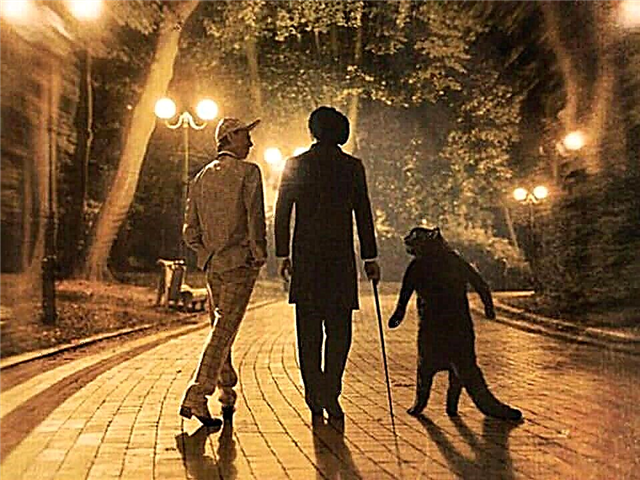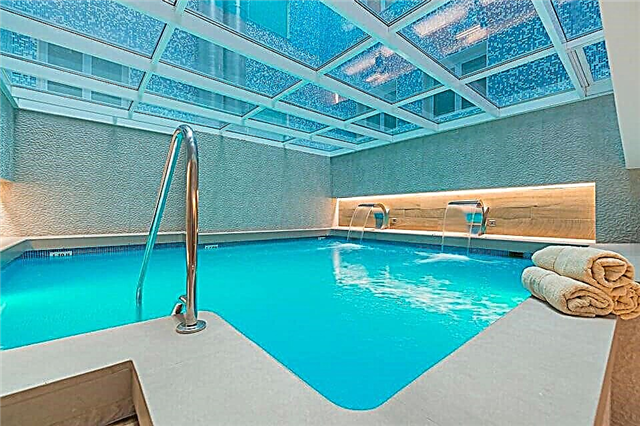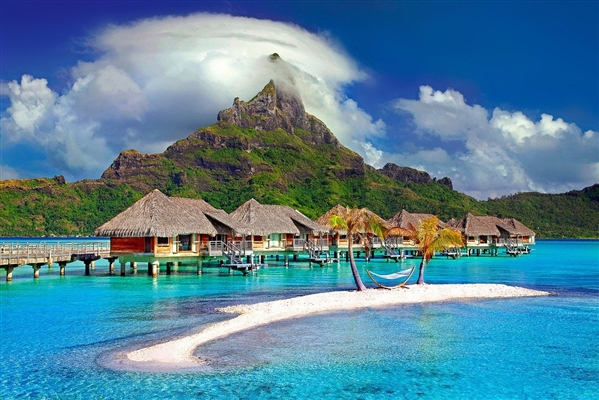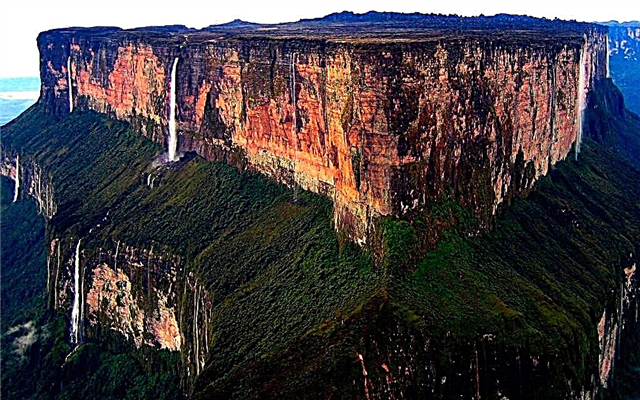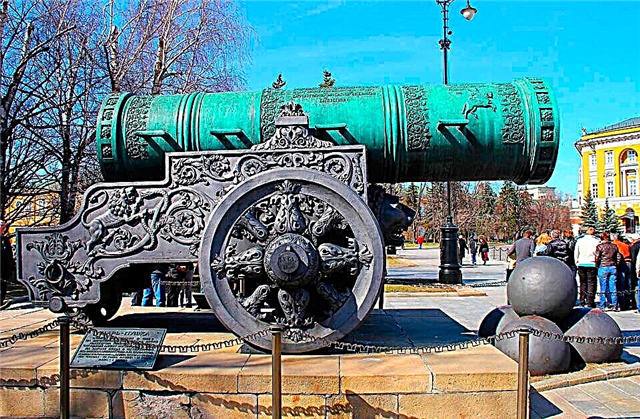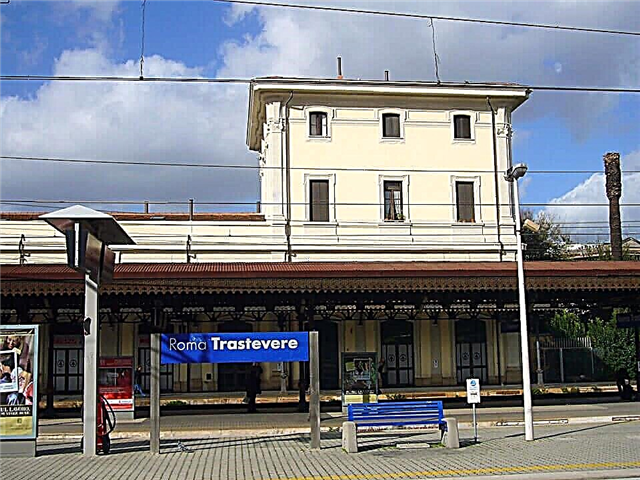Arriving in Rome, usually, they begin acquaintance with the eternal city with the breathing grandeur and history of the center: the ancient Colosseum, monumental triumphal arches and striking splendor of cathedrals. But you will only be able to feel the true spirit of Italy by visiting the area in Rome Trastevere, which stretches on the eastern slope of the Yankul hill, on the western bank of the Tiber. With a labyrinth of medieval narrow streets with old houses and churches, frescoes, art galleries, markets and picturesque corners, it will sink into your soul so much that you will want to settle here and learn its exciting history.
District history

The region got its name from the Latin trans Tiberim, which is interpreted as "beyond the Tiber", "across the Tiber". The territory inhabited by Etruscan prisoners, the unattractive right bank of the river in the distant VIII-VI centuries, left only the name of the region as a legacy. Later, in the 3rd and 4th centuries AD, on the right bank, which, in contrast to the left bank, was considered a non-prestigious place, dwellings of the poor and the first Christian churches began to be built.
In the Middle Ages, a network of uneven narrow streets with lanes and small squares, most of which have survived to this day, spontaneously formed here. They conquer with the view of medieval churches entwined with grapes and ivy, houses with a palette of terracotta colors, cozy street cafes. Their originality and uniqueness fill the area with an indescribable atmosphere. Let's take a virtual walk along the streets and see for ourselves its charm.
What to watch
You will not see the attractions included in the tourist guides of Rome. However, walking along the ancient streets, your attention will certainly be attracted by several picturesque towns, beautiful buildings and ancient temples. Let us stop for a while near them.
Trilussa Square

We start our journey from Trilussa Square, opposite the Sisto Bridge. It is one of the most famous Roman squares and a favorite meeting place for the Romans. The central part of the square is decorated with a fountain with steps leading to it, on which townspeople like to sit and tourists to relax. At the pompous fountain, built by order of Pope Paul V Borghese, you will see the figures of dragons, expressing the heraldry of the Borghese family. Your attention will be attracted by the monument to the poet Trilussa, who leaned in thoughtfulness on the fragments of ancient Roman buildings. Trilussa Square often becomes an open-air stage, where concerts and performances are held, which tourists watch with interest.
Basilica of Santa Maria in Trastevere

The Basilica of Santa Maria in Trastevere, towering on the square of the same name, is deservedly recognized as the pearl of medieval Italian architecture. It is the oldest and main church in the area. The main building of the temple was laid in the 3rd century, and in the 12th century a bell tower was added to it. At the beginning of the 18th century, a portico with sculptures of Roman saints was added to the basilica. It is impossible to take your eyes off the elaborate mosaic that adorns the church façade, depicting St. Mary surrounded by 10 virgins and sparkling mosaics of the apse.
Once inside the temple, you will see a series of gilded mosaics dedicated to the main events in the life of the Mother of God: the Annunciation, the Birth of Christ, the Adoration of the Magi, the Dedication of the baby Jesus in the Temple and the Dormition. The splendor of the wooden carved gilded ceiling, the skill of the Avila Chapel and the Altemps Chapel with the priceless ancient icon of the Madonna amazes. You can see this beauty for free on any day from 7.30 to 21.00.
Church of San Francesco a Ripa

The area's architectural treasures include the Baroque church of San Francesco D'assisi A Ripa. According to legend, it was built on the spot where Saint Francis of Assisi, who arrived in Rome, stayed in the 13th century. Confirmation of this is the stone kept in the church, on which Saint Francis, the founder of the Franciscan order, laid his head during his sleep. Then there was a shelter at this place, and after the canonization of Francis, in 1231, the construction of the basilica began. It was completely rebuilt in 1689 according to the project of Mattia de Rossi and decorated with sculptures.
After seeing the church from the outside, go inside to see the sculpture The Ecstasy of Blessed Louis Alberoni, executed in 1675 by the sculptor Bernini and recognized as a Renaissance masterpiece. The Rospillosi chapel, built of multi-colored marble, dating from the early 17th century, made by the author of the famous waterfall in Peterhof, Nicolo Michetti, will attract attention.
The church is open to visitors every day from 7.15 to 12.00 and from 16.00 to 19.30.
Basilica of Saint Cecilia

Saint Cecilia, patronizing church music, is recognized in Italy as a Christian martyr. The first Trastevere church dedicated to her was built in the 5th century, according to legend, on the site of the house of the daughter of a Roman patrician, Cecilia and her husband, who were martyred in the 3rd century. The tomb with the incorruptible body of the saint was found in the Roman catacombs in the 16th century, which surprised everyone. Today you can venerate the relics of Saint Cecilia in front of the altar in the tomb.
Above it is a white marble sculpture depicting a virgin martyr with a head covered with linen and mortal wounds from a blow from a sword. The church has preserved unique frescoes of the Last Judgment, created by the famous artist of the Middle Ages - Pietro Cavallini. The entrance to the church is free daily from 10.00 to 13.00 and from 16.00 to 19.00. Archaeological excavations are underway on the church territory, which can be viewed for 2.2 €.
Church of Santa Maria del Orto

The history of the construction of the Church of Santa Maria del Orto goes back to the 15th century. According to legend, the origin of the church is associated with the miracle of healing a paralyzed peasant after praying in front of the image of the Virgin Mary, painted in front of the entrance to his garden. Construction of the church began in 1489 and continued until 1567. The basilica will not surprise tourists with its architecture and facade decoration.
Her unsurpassed beauty is hidden inside. Lifting your head up, you will be amazed by the luxury of the coffered ceiling and the enchanting 15th century mosaics that mysteriously shimmer in the gloomy light. It is worth mentioning that Michelangelo's best student, Guidetti, put his soul into the design of the church interior. His work can be seen daily from 9.30 am to 12.30 pm and from 3 pm to 5.30 pm, except in August, when the church is closed.
Villa Farnesina

The pompous Villa Farnesina on Via della Lungara, recognized as an example of Renaissance architecture, was built in 1506 for a banker from Siena according to the project of the famous architect Baldassare Peruzzi - the creator of the world famous St. Peter's Basilica. At the end of the 16th century, the building became the property of Cardinal Alessandro Farnese, which gave the villa its name.
Thanks to Cardinal Farnese, who attracted the best masters of Renaissance painting to decorate the interior, we can admire the frescoes by Raphael Santi, Giovani da Udine and Sebastiano del Piombo. The halls of the villa also contain a large collection of unique art objects. The beauty of the villa is underlined by the lovely garden surrounding it. You can view artistic masterpieces every day, except Sundays, from 9.00 to 14.00, having paid an entrance fee of 6 €, and only on the second Sunday of the month the entrance is open from 9.00 to 17.00.
Palazzo Corsini

Opposite Villa Farnesina, the Late Baroque Grand Palace attracts attention. This is the Palazzo Corsini, which belonged to a well-known Italian aristocratic family for a long time. The palazzo is surrounded by picturesque gardens that rise up to the Gianicolo hill. The second floor of Palazzo Corsini is occupied by the collections of the National Gallery of Ancient Art of the Renaissance and Baroque.
Most of the art canvases are works by Italian artists of the 17th – 18th centuries. Connoisseurs of painting will see paintings by Caravaggio, Giordano, Rubens, Van Dyck, Murillo, depicting religious subjects. In addition to them, there are historical and genre paintings, as well as sculptures.The gallery is open to visitors: Wednesday - Monday from 8.30 to 19.00. The day off is Tuesday.
Flea market of Porta Portese

The largest flea market in Rome, Porta Portese, can hardly be called a tourist attraction. But it is he who is the place that attracts huge crowds of tourists with its unprecedented scale and scattering of retro objects. To get into this world of invaluable secondhand, located at the intersection of Trastevere and V.I.Nievo Streets, you need to focus on the Porta Portese arch, which served as a gateway to Rome during the Roman Empire.
Today, the arch allows countless streams of tourists hunting for unique souvenirs and original handicrafts. Here you can find unique old postcards and posters, costume jewelry, vintage clothes, old dishes and valuable antiques. The market gathers sellers, regardless of the weather. You can wander through its lanes every Sunday from 6.00 to 14.00.
Tempietto Bramante

The small rotunda chapel Tempietto Bramante, erected in 1502 by the architect Bramante in the center of the monastery courtyard on the Yankul hill, on the site of the crucifixion of St. Peter, is recognized as a unique architectural creation of the Renaissance. Temeetto, which means “temple” in Italian, combines features of ancient architecture with features of the Catholic Church. The gracefulness of the rotunda, surrounded by 16 granite columns and crowned with a dome, is admirable.
The outer walls are decorated with ornaments with sea shells. In general, the rotunda-chapel appears as a stepped pyramid, producing the effect of a majestic structure. Inside, Tempietto is only 4.5 meters in diameter. Along the perimeter of the walls there are 4 niches with statues of the holy evangelists revered in Rome. Above the altar, you will see the monumental figure of St. Peter. The interior is decorated with walls and vaults, decorated by masters of the XVI-XVII centuries and marble mosaic floor.
You can visit the rotunda chapel: April-September from 9.00 to 19.00; October-March from 9.00 to 18.00.
Botanical Garden

The territory of the Botanical Garden serves as a luxurious green oasis, which adorned the slopes of the Yankul Hill with lush greenery. The garden, the views of which its visitors enjoy, became the successor of the Papal Botanical Garden, founded in the Renaissance. Walking palm and pine alleys will certainly lead you to the most picturesque corners of the park, divided into thematic zones. You can visit the Japanese garden, where you will see a bamboo grove, a colorful rock garden and a refreshing cascading waterfall.
All types of Mediterranean vegetation are extensively represented in the Mediterranean Garden. The greenhouse with cacti collected from all over the world will amaze with its diversity, and the multicolor and heady aromas of the rose garden delight visitors with indescribable delight. You can spend unforgettable hours in the beauty of the Botanical Garden by paying 8 €. From April to October it is open: Monday to Saturday from 9.00 to 18.30; in November - March until 17.30. Sunday is a day off.
Janiculum hill and observation deck

The northern part of Trastevere is surrounded by the Janiculum hill overlooking the area, which is not one of the 7 famous Roman hills. Tourist interest is represented by its observation deck, which reveals, as on a map, the main part of the historical and cultural monuments and attractions of the center of Rome. The top of the hill is decorated with an equestrian sculpture of the national hero of the Italian Republic - Garibaldi. Exactly at noon, here you can watch how they shoot from a cannon located near the monument. Then the volley begins to echo the bells of all Roman temples. The path from the center to Yankul Hill will take no more than 15 minutes.
Fountain Aqua Paola

On the Yankul Hill, not far from the Gate of Saint Pancratius, the grandiose Aqua Paola fountain, reminiscent of a pompous palace, attracts attention. In the common people it was dubbed "the fountain". The fountain was the culmination of an ancient Roman aqueduct, rebuilt under Pope Paul V Borghese in the early 17th century and providing water to several urban areas. Today the fountain appears in the form acquired after the reconstruction of the late 17th century by the architect Carlo Fontana - and with sculptural figures of eagles and winged dragons, symbolizing the heraldry of the Borghese family. Their images are also visible on the coat of arms of the pontiff, located at the top of the monument, supported by two angels. Around the fountain, a square was built, revealing an amazing panorama of the Eternal City.
Tiberina Island

In the middle of the Tiber River is the unique island of Tiberina, which resembles a boat in its outlines. It is connected to the historic center of Rome and Trastevere by 2 ancient pedestrian bridges dating back to ancient times. Via the Fabricho Bridge you can get to the northeastern side of the island from the left bank of the Tiber from the Champ de Mars. While on the Ponte Cescio it will be a pleasure to make a promenade from the southern part of the island to the right bank of Rome to Trastevere.
The picturesque nature and ancient buildings of the island evoke the associations of a medieval city. In ancient times, the temple of medicine of the Greek god Aesculapius was located here, built at the end of the 3rd century at the height of the plague in Rome. Today there is also a hospital on this site. On the island of Tiberina, you will see several interesting corners, the Basilica of St. Bartholomew, the building of the Church of San Giovanni Chalibita of the XIV century, the Tower of Caetani.
Bridge of honor

The Chestio Bridge connected the island of Tiberina with the right-bank region previously in 46-44 AD. It got its name from the name of the Cestius clan involved in its construction. Until now, the bridge has been rebuilt several times, changing its name. In 370 AD, it was reworked using different types of tuff and stone, renaming it Gratian's Bridge after one of the reigning emperors. In the 15th century, the stone crossing was named the Bridge of St. Bartolomeo after the name of the church on the island.
The end of the 19th century was marked by the reconstruction of the embankment, which caused an increase in the western channel by almost 30 meters. Then the antique bridge was lengthened, bringing 2 extreme small arches in size in accordance with the central arch. Today you will walk across the 80-meter three-arch bridge, which inspired Luigi Rossini's famous engraving "View of the Cestio Bridge", touching the parapets that are more than 2 millennia old.
Legends

The Trastevere area breathes with fascinating legends and mysterious legends. Having visited the island of Tiberina, you will hear the legend about the Roman tyrant Tarquia Gordoma, who ruled in the 6th century BC. For cruelty and injustice to their people, the inhabitants of Rome overthrew him from the throne and drowned him in the river. The body of the drowned ruler went to the bottom, where silt and river mud became his underwater grave. Later, at the resting place of Tarquil, the island of Tiberina was formed.
The following story refers to the 60s of our era, when during the reign of the emperor Nero, persecution of the preachers of Christianity was conducted. The apostle Peter who came to Rome for his sermons was crucified on the cross, like his teacher Jesus Christ. Apart from being worthy of crucifixion like Christ, Saint Peter asked to be crucified upside down. Today, under the Tempiette Bramante chapel, there is a crypt, in the center of which you will be shown the place where the cross for the crucifixion of St. Peter stood.
One of the legends concerns the love story of the outstanding artist who created the picturesque masterpieces of the Renaissance, Raphael Santi. You will see that his work repeats the image of one young person whom the master saw on the street of the quarter, decorating the Villa Farnezina. The beauty of the girl, the daughter of the local baker Margarita Lucia, struck Raphael's heart, and the house where the beauty lived on Dorothea Street has a memorial sign. And you will learn many more legends while wandering with a guide through the old narrow streets.
Tours

You can feel the real spirit of the Eternal City on an excursion with a Russian-speaking guide.
The guide on the excursion “Trastevere. Rome you never knew about. "
On an excursion dedicated to the Chronicle of Winding Streets, you will see the first Roman bridge, Lungara Street - the path of the pilgrims who went to the Vatican, the Semptiei Gate that defended the area from enemy attacks, a 500-year-old pharmacy, an old church and a barrel fountain.
Lovers of ecclesiastical architecture can choose the guided tour “The Churches of Trastevere and Their Masterpieces”. The masterpieces of early Christianity and the Renaissance will appear before their eyes:
- the church of Santa Maria in Trastevere will amaze with the icon of the 6th century that saved Rome from drought, the Avila chapel and the atmosphere exuded by the columns of ancient thermal baths;
- the church of San Francesco a Ripa will allow you to admire the sculpture of Bernini and the magnificent chapel of the Pallavicini family in silence;
- the Basilica of Saint Cecilia, the patroness of musicians, will acquaint with the works of the most famous artists of his time: Guido Reni, Pietro Cavallini, Stefano Maderno.
"Trastevere - the real spirit of Rome" - the tour will cover all the famous churches of the area, walking along the street where Raphael's Beloved lived and ending on the island of Tiberina.
The excursion "Hidden Plots of Authentic Corners" will reveal the secret stories that took place behind the facades of the "House of Punishment", Villa Farnezina, Palace of Corsini. The guide will explain the inscriptions on the buildings of famous Italians.
A special tour is dedicated to "Villa Farnesina: with frescoes by Raphael without crowded museums!"
An excursion to the Janiculum hill will introduce you to the history of Garibaldi's life, enjoy the views of Rome from the observation deck, and give you relaxation at the pompous Aqua Paola fountain.
"The streets of Trastevere and the panoramas of Gianicolo" will give you a stunning view of the entire old town. During the excursion, you will see the Paolo fountain, the Tempiettto rotunda, the decoration of the temples of Santa Maria in Trastevere and Santa Cecilia, medieval frescoes, walk along the ancient bridges to the island of Tiberina.
"The Charm of the Evening City" - a promenade through the most beautiful places of Trastevere with a visit to taverns, cafes and sturgeon.
Gastronomic Tours are several excursions to choose from in the gastronomic regions of Trastevere. The guide will introduce you to authentic Italian delicacies, wonderful pastries and ice cream. It will be useful, exciting and tasty:
- indulge yourself in the amazing taste of local cheeses and prosciutto in the antique cheese and butcher shop Antica Caciara
- taste the best Italian wines in the iconic Ferrara enoteca
- enjoy ice cream flavors from Maria Grazia using only seasonal fruits and the best ingredients
- learn the taste of a variety of pizzas cooked before your eyes in a pizzeria on the medieval street of Trastevere
Where to eat deliciously

We will tell gourmets where they can experience true delight in the taste of traditional Italian dishes. After all, some of the best and most inexpensive restaurants, taverns and cafes are located in Trastevere.
La Tavernetta 29 da Tony e Andrea on Via della Pelliccia 29A is famous for authentic Italian cuisine. The restaurant will delight you with a wonderful bar, shrimp risotto, ravioli and, of course, Florentine steak.
Federica & Barbara of BB Kitchen can be found nearby Fontana in Piazza Santa Maria in Trastevere. You will be provided with real Italian hospitality, national cuisine with lasagna, gnocchi, delicious tiramissa, original ice cream and communication with the hostess Barbara.
Ombre Rosse on Piazza di S. Egidio, 12-13 will delight you with the taste of the freshest hot focaccia, pinsa with salmon, Carbonara pasta and drinks.
Of course, one cannot fail to mention the pizzerias. The best pizzerias Pizzeria di Marmi on Viale di Trastevere 53-59. Everyone will say that there is the most delicious thin crust pizza in Rome.
Seu Pizza Illuminati on Via Angelo Bargoni, 10-18 more expensive. The assortment of this stylish pizzeria - pizzas in the Neapolitan tradition with lush dough and creative fillings.
Peppo al Cosimato at Via Natale del Grande, 9 will amaze you with a variety of seafood dishes: soups, fish of the day with vegetables, pizza, octopus sandwiches and an extraordinary dessert maritozzo.
The bars of the La Boccaccia chain, located on Via di Santa Dorotea, will also offer inexpensive food. Their feature is the sale of pizza slices with a variety of fillings, sold by weight.
La Tavernaccia da Bruno at 6 Via Giovanni da Castel Bolognese will give you a taste of real Italian pasta and melanza made with eggplant and parmesan.
For take-out places, we recommend Rumi Bottega Organica at Via di San Francesco a Ripa, 133, where you can get any kind of salads, lasagne, hamburgers and vegan dishes.
On Via di S. Francesco a Ripa, 29, don't go past the Tiramisu restaurant, where you can get takeaway tiramisu with unconventional flavors.
For those with a sweet tooth, head to Fatamorgana on Via Roma Libera, 11, famous for its taste and range of ice creams and sweets, or Fior di Luna on Via della Lungaretta, 96 to enjoy original homemade organic ice creams.
Which hotel to choose

The choice of hotels mostly 3 * status and B&B hotels with bed and breakfast.
But for lovers of luxury life, there are several 5 * and 4 * hotels. Here are some good options near the center with beautiful views from the hotel:
- Gran Melia Rome - The Leading Hotels of the World 5 *, located in the center of Rome. From the stylishly decorated rooms you can enjoy views of the Vatican, Castel Sant'Angelo, Vicolo di San Onofrio or the hotel's garden.
- Hotel La Rovere 4 *, located on the embankment of the Tiber River, just 650 meters from St. Peter's Square.
- Casa Mia In Trastevere 3 * on Via della Renella 88, with spacious stylish rooms near the Santa Maria in Trastevere square and across the river from the historic center.
- Hotel San Francesco 3 * with a beautiful view of the circular panorama from the rooftop terrace of the historic seminary building. Located 300 meters from Porta Portese market.
- Situated on the banks of the Tiber, directly opposite Trilussa Square, Tree Charme is a charming small hotel in an ideal location on the banks of the Tiber River with elegant rooms.
If you want to choose a budget accommodation, 3 * hotels near the Trastevere railway station are suitable: Hotel Il Villino 3 * and Hotel Villa Rosa 3 * from which it is convenient to get to the historic center of Rome and the Vatican. Prefer an apartment? Then choose: Sweet del Moro at 23 Via del Moro 1 piano, with two bedrooms and a living room, located 1.7 km from the Synagogue of Rome and 2.9 km from the Roman Forum, or an apartment in the Residenza San Calisto 3 * complex in a picturesque old quarter in the center of Trastevere.
How to get there

If you are already in Rome, the Trastevere area is easily accessible on foot. From the Vatican side, walk 2 km along the embankment in a southerly direction. The same distance separates the western part of the area from the Colosseum and the Roman Forum. Walking from Piazza Venezia, the Colosseum or the Aventine Hill, cross the Tiber over the bridges: Ponte Sisto, Ponte Garibaldi, Ponte Cestio and Ponte Fabricio and Ponte Palatino. From Piazza Venezia and the Roman Forum on Trestevere there is a tram number 8, from which you need to get off at one of the stations: Viale Trastevere or Mastai. For 1.5 euros, he will take you to the area in 12 minutes.
In 15 minutes from the Roma Termini railway station, you can reach Roma Trastevere by train for 1 euro (flights RV 2348 and regional route REG 23660 Grosseto) or by bus H. for 1.5 euros. From Fiumicino Airport, it takes half an hour by commuter train FM1 or FL1 to Roma Trastevere station. The ticket costs 8 euros. It reaches the south side, from where you can reach your hotel on foot or by tram / bus.



